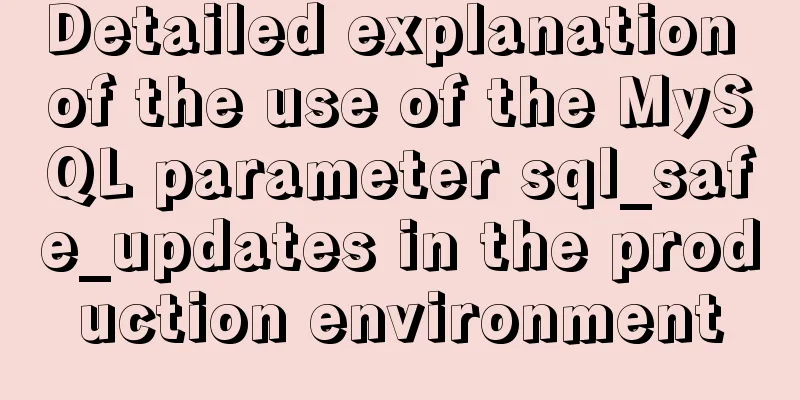Detailed deployment of docker+gitlab+gitlab-runner

|
environment Server: centos7 Client: window Deploy docker+gitlab+gitlab-runner on centos7, and use ssh connection on win10. Developers only need to submit code to upload project files, package images, and publish and run tests. 1. Install docker and docker-compose on centos7 Install docker: 1. Docker requires the kernel version of the CentOS system to be higher than 3.10. Check the prerequisites on this page to verify whether your CentOS version supports Docker. Use the uname -r command to check your current kernel version $ uname -r 2. Log in to CentOS with $ sudo yum update 3. Uninstall the old version (if the old version has been installed) $ sudo yum remove docker docker-common docker-selinux docker-engine 4. Install the required software packages. yum-util provides the yum-config-manager function. The other two are dependent on the devicemapper driver. $ sudo yum install -y yum-utils device-mapper-persistent-data lvm2 5. Set up yum source $ sudo yum-config-manager --add-repo https://download.docker.com/linux/centos/docker-ce.repo
6. You can view all docker versions in all repositories and select a specific version to install $ yum list docker-ce --showduplicates | sort -r
7. Install Docker $ sudo yum install docker-ce #Since only the stable repository is enabled by default in the repo, the latest stable version 17.12.0 is installed here. $ sudo yum install <FQPN> # For example: sudo yum install docker-ce-17.12.0.ce If error: Problem: package docker-ce-3:19.03.8-3.el7.x86_64 requires containerd.io >= 1.2.2-3, but none of the providers can be installedSolution: https://www.cnblogs.com/suanmiaoup/p/12772140.htmlType: yum install -y https://mirrors.aliyun.com/docker-ce/linux/centos/7/x86_64/edge/Packages/containerd.io-1.2.6-3.3.el7.x86_64.rpmType again: yum install docker-ce docker-ce-cli containerd.io
8. Start and join the boot $ sudo systemctl start docker $ sudo systemctl enable docker 9. Verify whether the installation is successful (the presence of client and service parts indicates that the docker installation and startup are successful) $ docker version
10. It is recommended to change the docker image source: 1. Modify or create the daemon.json file: vi /etc/docker/daemon.json Write the following configuration into the file, save and exit (if you don't know how to operate, try Baidu vi command):
{
"registry-mirrors": ["http://hub-mirror.c.163.com"]
}
2. Restart docker: Install docker-compose: Reference official website: https://docs.docker.com/compose/install/ 1. Run this command to download the latest version of Docker Compose: sudo curl -L "https://github.com/docker/compose/releases/download/1.23.2/docker-compose-$(uname -s)-$(uname -m)" -o /usr/local/bin/docker-compose 2. Apply executable permissions to the binary: sudo chmod +x /usr/local/bin/docker-compose 2. Pull the Chinese version of gitlab image Address: https://hub.docker.com/r/twang2218/gitlab-ce-zh 1. Use xshell+xftp to create folders for storing logs, configurations, and data in centos7 The folder structure is as follows: gitlab -config -logs -data docker-compose.yml 2. Start using docker-compose.yml
version: '3'
services:
gitlab:
image: 'twang2218/gitlab-ce-zh:11.1.4'
restart: unless-stopped
hostname: 'gitlab.domain.com'
container_name: gitlab
environment:
TZ: 'Asia/Shanghai'
GITLAB_OMNIBUS_CONFIG: |
external_url 'http://gitlab.domain.com/'
registry_external_url 'https://gitlab.domain.com'
gitlab_rails['gitlab_shell_ssh_port'] = 1022
gitlab_rails['time_zone'] = 'Asia/Shanghai'
# gitlab_rails['smtp_enable'] = true
# gitlab_rails['smtp_address'] = "smtp.exmail.qq.com"
# gitlab_rails['smtp_port'] = 465
# gitlab_rails['smtp_user_name'] = "[email protected]"
# gitlab_rails['smtp_password'] = "password"
# gitlab_rails['smtp_authentication'] = "login"
# gitlab_rails['smtp_enable_starttls_auto'] = true
# gitlab_rails['smtp_tls'] = true
# gitlab_rails['gitlab_email_from'] = '[email protected]'
ports:
- '80:80'
- '443:443'
- '1022:22'
volumes:
- ./data:/var/opt/gitlab
- ./config:/etc/gitlab
- ./logs:/var/log/gitlabIf your server has a domain name, replace gitlab.domain.com above with the actual domain name. During the experiment, you can also directly modify 3. cd to the gitlab directory and execute docker-compose up -d to start it and wait for a while. . 4. After the startup is complete, open the browser and visit gitlab.domain.com
5. SSH connection to GitLab First we need to get an SSH Key, enter cat ~/.ssh/id_rsa.pub If characters starting with ssh-rsa appear, it means that an SSH Key already exists locally and we can use it directly. If not, we need to create an SSH Key ourselves.
6. Create SSH Key Enter the following command to create an SSH key. ssh-keygen -t rsa -C "[email protected]" -b 4096 After completion, you can enter the above cat command or pbcopy to directly copy the generated ssh key. pbcopy < ~/.ssh/id_rsa.pub In GitLab, go to Account-》Settings and find SSH Keys to add this key.
7. SSH connection port 1022 Normally you can already use the git command to connect to the gitlab we deployed, but the difference here is that we mapped port 22 of the container to port 1022 of the host, so we need to specify the port to connect. ssh -p 1022 [email protected] You also need to change the ssh port in GitLab's configuration file (if it has been configured above, it is not necessary), otherwise the project connection address generated for us in GitLab will not be connected. /gitlab/config/gitlab.rb gitlab_rails['gitlab_shell_ssh_port'] = 1022 After changing the ssh port, restart the gitlab container, and then our project ssh connection address will become: ssh://[email protected]:1022/test/projectname.git At this point we have completed the deployment of GitLab. 3. Pull the gitlab-runner image Address: https://hub.docker.com/r/gitlab/gitlab-runner 1. Use xshell+xftp to create folders for storing logs, configurations, and data in centos7 The folder structure is as follows: gitlab-runner -config docker-compose.yml 2. Start using docker-compose.yml
version: '3'
services:
runner:
image: 'gitlab/gitlab-runner:v11.4.2'
container_name: gitlab-runner
restart: always
networks:
-gitlab_default
volumes:
- ./config:/etc/gitlab-runner
- /var/run/docker.sock:/var/run/docker.sock
networks:
gitlab_default:
external: trueAmong them, gitlab_default is the network of gitlab above Note: The version of gitlab-runner should match that of gitlab as much as possible, otherwise you will not be able to connect to gitlab 3. cd to the gitlab directory and execute docker-compose up -d to start 4. Configure gitlab-runner to connect to gitlab 1. Register gitlab-runner docker exec -it gitlab-runner gitlab-runner register 2. We will enter http://gitlab.domain.com or http://ip:port, which is the GitLab we installed locally 3. Please enter the gitlab-ci token for this runner You can find it in the project management area->runners (the share type runner is registered here)
4. Enter a description, such as: test 5. Enter a tag (you can leave it blank, you can edit it later) 6. Select whether to execute when encountering untagged submissions. We select true 7. Whether to lock this runner to the current project, we select false 8. Choose an executor This step is more important (ssh, docker+machine, docker-ssh+machine, kubernetes, docker, parallels, virtualbox, docker-ssh, shell) We choose docker 9. Select the default image: docker:stable After registration, we can see the runner we just registered on the GitLab page for getting gitlab-ci token.
At the same time, you can see a config.toml file generated under gitlab-runner/config. The content of the file is as follows: concurrent = 1 check_interval = 0 [[runners]] name = "test" url = "http://192.168.1.157/" token = "69c0ff735a76c0bb3cce977a361661"#This token is generated by gitlab-runner according to the token in the third step. executor = "docker" [runners.docker] extra_hosts = ["gitlab.domain.com:192.168.1.157"] #If you cannot connect to gitlab in the above steps, it is because gitlab-runner cannot resolve gitlab.domain.com inside docker. This can be solved by adding configuration tls_verify = false image = "docker:stable" #This is because based on this image, it contains tools such as docker, so there is no need to install docker when there are docker instructions in the .gitlab-ci.yml executed by gitlab-runner. Reference address: https://docs.gitlab.com/ee/ci/docker/using_docker_build.html privileged = false #Usually true when using docker-in-docker disable_cache = false volumes = ["/var/run/docker.sock:/var/run/docker.sock", "/cache"] shm_size = 0 [runners.cache] Or you can configure it first, and gitlab-runner will automatically load the configuration file when it runs. Reference address: https://docs.gitlab.com/ee/ci/docker/using_docker_build.html 5. Submit project code to complete CI/CD 1. Add .gitlab-ci.yml to the project root directory. After submitting the project code, the file will be automatically run to package the project. image: docker:stable image: name: docker/compose:1.23.2 # update tag to whatever version you want to use. This is because my script below uses docker-compose entrypoint: ["/bin/sh", "-c"] before_script: -docker version -docker-compose version build: script: #Write the following script according to your own situation - COMPOSE_HTTP_TIMEOUT=200 docker-compose -f docker-compose-efk.yml up -d #This is because my project has been arranged with docker-compose - COMPOSE_HTTP_TIMEOUT=200 docker-compose up -d --build --force-recreate 2. Submit code through git on win10 cd to the project root directory. If git is installed, you can directly open git bash in the root directory to execute. If it is not installed, you can also open powershell git init #If it has not been initialized yet git add . #Add all the projects git commit -m "init" Submit to git git remote add origin [email protected]:1022/root/test.git #Note that the port is 1022. This is specified when running gitlab above. Just execute it once. git push -u origin master #Push to the server gitlab This is the end of this article about the detailed deployment of docker+gitlab+gitlab-runner. For more relevant docker gitlab gitlab-runner deployment content, please search for previous articles on 123WORDPRESS.COM or continue to browse the following related articles. I hope you will support 123WORDPRESS.COM in the future! You may also be interested in:
|
<<: Vue implements the function of calling the mobile phone camera and album
>>: Modify the default data directory of MySQL 8.0 (quick operation without configuration)
Recommend
Docker containers communicate directly through routing to achieve network communication
Overview As for the current default network of Do...
Two ways to start Linux boot service
Table of contents rc.local method chkconfig metho...
Introduction to Apache deployment of https in cryptography
Table of contents Purpose Experimental environmen...
The front-end page pop-up mask prohibits page scrolling
A problem that front-end developers often encount...
Detailed explanation of mysql record time-consuming sql example
mysql records time-consuming sql MySQL can record...
js tag syntax usage details
Table of contents 1. Introduction to label statem...
How to export mysql table structure to excel
The requirements are as follows Export the table ...
Detailed explanation of vite2.0+vue3 mobile project
1. Technical points involved vite version vue3 ts...
Linux implements the source code of the number guessing game
A simple Linux guessing game source code Game rul...
Detailed steps for building Portainer visual interface with Docker
In order to solve the problem mentioned last time...
Linux system MySQL8.0.19 quick installation and configuration tutorial diagram
Table of contents 1. Environment Introduction 2. ...
How to change the root password in a container using Docker
1. Use the following command to set the ssh passw...
Mobile terminal adaptation makes px automatically converted to rem
Install postcss-pxtorem first: npm install postcs...
A simple method to deal with the tabBar at the bottom of WeChat applet blocking content
After configuring the tabBar in the WeChat applet...
Implementation of forced line breaks and non-line breaks in div, td, p and other containers in HTML
1. Force no line break and end with an ellipsis. C...


















